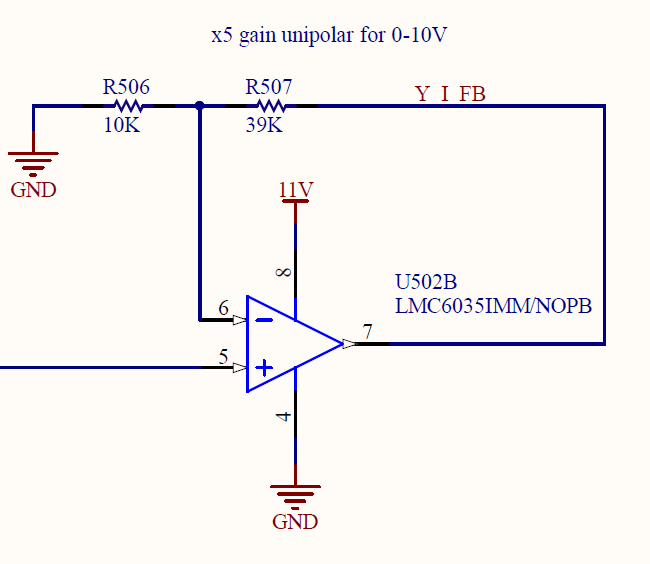I am trying to utilize the LMC6035 as a non-inverting gain amplifier. I have the circuit seen below (bypass cap present in design but not shown). I have a stable 1V DC signal on pin 5 of the LMC6035, and I want a stable 5V output signal on pin 7 (i.e. net Y_I_FB). I am attempting to drive a simple resistive load, but I am getting large oscillations on the output. With the 1V input, and a 1K load resistor I am getting an output oscillation of 1V-5V at ~425 kHz
-
Ask a related question
What is a related question?A related question is a question created from another question. When the related question is created, it will be automatically linked to the original question.


